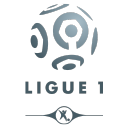College football's Big 12 Conference has long been associated with points. When Oklahoma's Bob Stoops brought offensive coordinator Mike Leach to the conference in 1999 (and then Texas Tech made him its head coach a year later), the spread offense found a place to germinate and conference games have been high-scoring ever since. Offenses there are fast and innovative, which results in lots of points; occasionally defenses are less than competent, too, which results in lots of points as well.
American football fans may instinctively know the difference between, say, Big 12 and SEC football, but since the country's love affair with soccer is still in the "budding romance" stage, they might not know much about different soccer leagues beyond high-level stereotypes.
And so, if you're giving the gift of soccer this holiday season, consider this a helpful guide. With more soccer available on your television than ever before, here's how to find the league, teams and players that resonate most strongly with your own personality and preferences.
For instance, if you're a fan of Big 12 football, you really need to turn your eyes toward Germany.
A quick word about methodology...
I compiled Opta data for seven leagues -- Europe's five strongest leagues (England's Premier League, Spain's La Liga, Germany's Bundesliga, Italy's Serie A and France's Ligue 1), plus MLS and Liga MX -- going back to the beginning of the 2018-19 campaigns.
From there, I grouped the traits that distinguish each league from others.
For each league, I include an American sports equivalent and the teams and players most directly reflective of the league's defining characteristics.

ENGLISH PREMIER LEAGUE
American sports equivalent: The NFL. A money-cannon behemoth that reflects the sport's most recent trends (and maybe finds it difficult to change directions when those trends change).
Standout traits: Most pass attempts and passes per possession. Fewest long passes, second-highest percentage of shots in the box. Second-most blocked shots, second-most tackle attempts. Most clearances, second-most corners, second-most chances from set plays.
I wrote a couple of weeks ago about how the Premier League had evolved from Sir Alex Ferguson's league to Pep Guardiola's (and it's now evolving again). No league is more driven by possession, short (and often backwards) passing and pragmatism than England's top tier. But just as money can buy you fancy things, it can also allow you to follow the latest fancy trends.
Bits of the proper English soccer personality shine through -- no league has a larger number of willing shot blockers, for instance -- but to win here, you must possess the ball at high levels.
There's a correlation here, by the way. The richest teams in Europe mostly play a predominantly possession-heavy style, and while La Liga and the Bundesliga each have two huge clubs, the Premier League has six clubs with particularly stocked coffers. That alone means 30% of the league plays the rich club style.
The league's defining team: Leicester City. Manchester City is the most ball-dominant team, but Leicester, led by former Liverpool manager Brendan Rodgers, is the closest to striking the balance between possession and the English stereotype. The Foxes are also having one hell of a season so far.
The league's defining player: James Milner, MF, Liverpool. This is a passer's league, and despite his advancing age, the 33-year-old Milner plays a key role when he's on the pitch: he passes. And passes, and passes, and passes, to the tune of nearly 70 per 90 minutes in league action. His completion rate has been 85% or higher in each of the past three seasons, and he's averaging 0.33 assists per 90 minutes. He still brings value and identity even with diminished playing time.

SPANISH LA LIGA
American sports equivalent: Houston Rockets. It pushed a trend that changed the sport, it houses the best pure scorer on the planet and it can get a little boring sometimes.
Standout traits: Fewest shots, shots on goal and assists. Second-fewest pass attempts, second-highest percentage of forward passes, lowest pass completion rate, second-lowest average possession time. Second-most duels, aerials, open crosses and clearances. Most goals from direct free kicks, highest scoring percentage on corners. Most yellow cards, most offsides called.
Spain is the home of the pass-heavy, "tiki-taka" stereotype, but that's really just Barcelona's brand and, for a few years there, the Spanish national team's thing. Barca (65% possession rate since the start of 2018-19) and Real (60%) still play the possession game as well as anyone -- again, rich teams unite -- but the rest of the league has resorted to non-possession tactics to try to get ahead. They're pretty good at it too: Atlético Madrid has three top-two league finishes in the past six seasons, plus two Champions League finals appearances and three Europa League titles in the past 10 years. Plus, Sevilla has a record five Europa titles since 2006.
Since the start of 2018-19, Atlético has had 49% possession in this span but has the third-best goal differential. Getafe has the fourth-best goal differential despite being downright allergic to the ball (41% possession, 63% pass completion rate). Real Betis, meanwhile, enjoys great possession numbers (59%) but is distinctly mid-table. This is anything but a "tiki-taka" league.
The league's defining team: Valencia. Los Che have figured out how to post strong results (fourth in the league in each of the past two seasons and within striking distance of third currently) while playing like the most generic Liga team possible: a possession rate around 50%, a solid but not too good completion rate, a far-slower-than-Bundesliga tempo, etc. (How do they win then? Solid chance conversion: basically, they finish their attacks better than you do.)
The league's defining player: Raul Garcia, MF, Athletic Club. Like Milner, the 33-year-old Athletic Bilbao midfielder is getting up there in age, but he perfectly mirrors the league's (non-Barca/Real) style: he wins duels and aerials, his passing is aggressive and his shots aren't often on goal.

GERMAN BUNDESLIGA
American sports equivalent: Big 12 football. You like points and offensive aggression, right?
Standout traits: Most goals, shots on goal and assists. Most possessions, lowest average possession time, most ball recoveries. Highest percentage of shots in the box, lowest save percentage. Second-fewest yellow cards.
In the weeks leading up to the league's winter break, we saw Borussia Dortmund and RB Leipzig draw 3-3 in a game that featured sloppy weather and sloppier goalkeeping, Dortmund beat Mainz 4-0, and Werder Bremen lose to Mainz and Bayern, back-to-back, by a combined 11-1. Even a lower-scoring match like Wolfsburg vs. Borussia Mönchengladbach featured two gorgeous top-shelf goals within the first 15 minutes.
Since the start of 2018-19, Bundesliga matches have included 3.2 goals; no other league in this sample topped 2.9. Not every match is 2012 Baylor vs. West Virginia, but it's dang close sometimes. (And it's coming to ESPN+ starting in August, 2020.)
The league's defining team: Borussia Mönchengladbach. Gladbach spent much of the fall atop the Bundesliga table, enjoying the fruits of one of the most difficult decisions you can make: after a couple of years of perfectly solid (and perfectly German) ball, it dumped manager Dieter Hecking in favor of Red Bull Salzburg's Marco Rose. He has made Gladbach even more German (aggressive counterattacks, tons of shots in the box) and quite a bit better to boot.
The league's defining player: Thorgan Hazard, MF/FW, Borussia Dortmund. A Gladbach stalwart until this season, the 26-year-old (and brother of Real Madrid's Eden Hazard) is one of only two league players to log over 4,000 minutes and average at least 0.25 assists and 0.25 goals per 90 minutes. When he's involved in an offensive sequence, said sequence is going vertical quickly.

ITALIAN SERIE A
American sports equivalent: Big Ten football. Efficient, inch-at-a-time offenses and physical defenses that make it awfully hard to score points.
Standout traits: Highest pass completion rate, lowest percentage of forward passes, most passes per possession. Most scoring chances, most crosses and open crosses and most shots ... but third-fewest goals, lowest shots-on-target percentage, second-lowest percentage of shots in the box, highest save percentage. Second-most fouls and yellow cards.
This league has taken on many of the same characteristics as the Premier League -- tons of safe passing and slow buildups -- only without the actual scoring. Counterattacking is minimal; Serie A defenses primarily park a bus in front of their goal and wait for you to take a bad shot, while offenses take their sweet, sweet time looking for something better. The average number of possessions in a Serie A match is lower than that of the slowest team in the Bundesliga. The technical expertise in this league is undeniable, but it is, like the Italian apéritif Campari, an acquired taste (and rather bitter).
The league's defining team: Lazio. Minimal possessions (89 per 90 minutes this season)? Check. High pass completion rate (84%)? Check. Plenty of yellow cards (nearly 2.5 per match)? Check. Effectiveness (top half of the league for 10 straight seasons and currently within striking distance of first)? Big check.
The league's defining player: Gianluigi Donnarumma, GK, AC Milan or Diego Godin, DF, Inter Milan. One other thing keeps goal totals tamped down: good goalkeeping. There is an abundance of it in Italy and Donnarumma, somehow still only 20 years old, could be the defining player in that regard for years to come. I'm also including Godin here for two reasons: the 33-year-old centre-back is the master of the horizontal pass and, to put it politely, he doesn't mind getting physical.

FRENCH LIGUE 1
American sports equivalent: Philip Rivers. Unashamedly aggressive, often spectacular and usually a little disappointing.
Standout traits: Second-highest direct speed, most duels, most take-ons (but second-lowest take-on success rate), most tackles. Second-fewest goals, shots on goal, assists and scoring chances. Second-most shots on direct free kicks but fewest goals on set plays. Second-lowest save percentage but most clean sheets. Second-most red cards.
From a statistical perspective, top-level French football resembles Liga MX a lot more than one might anticipate. Paris Saint-Germain spends all the money and plays exactly the possession game you would expect, but aside from maybe Lyon and Nice, the rest of the league is trying to advance the ball up the pitch at all costs.
It is perhaps a little bit too aggressive, as all this direct speed and vertical sequencing tends to simply result in turnovers. This league combines exciting young players (soon to be sold to bigger leagues) with physical veterans in a pretty unique way to create an odd overall product.
The league's defining team: Monaco The most unique club in the league -- a monied club in a monied principality on the French Riviera -- somehow plays maybe the most Ligue 1 ball in Ligue 1. It takes lots of shots (some of them even on target!) and attempts a lot of through balls and crosses. Monaco attacks, but doesn't always do it well: it's mid-table this year, but that's an improvement over last year's 17th-place finish.
The league's defining player: Andy Delort, FW, Montpellier. The Algerian international has spent most of his career in France but dabbled with Liga MX's Tigres a few years ago. It makes sense. Like Iturbe, Delort is fast and aggressive, but while he doesn't take quite as many long-distance bombs, he does attempt far too many take-ons.

MEXICAN LIGA MX
American sports equivalent: Every pickup basketball game you've ever seen (only, with world-class athletes).
Standout traits: Highest direct speed (how vertically the ball is advanced, basically), fewest possessions, fewest passes per possession. Highest percentage of forward passes, highest long-pass completion percentage. Lowest percent of shots in the box, second-lowest percentage of shots on target, fewest clearances, ball recoveries, interceptions or aerial challenges. Most shots on direct free kick, second-most goals from set plays. Most fouls and red cards.
Look, organization is fine. A pragmatic, ball-dominant team like Manchester City can obviously be fun to watch when things are clicking, but you still need some balance on the palate. Like sweet and salty, the increasingly clinical nature of the Premier League becomes a bit more enjoyable when paired with the occasional note of pure verticality and chaos.
Maybe the Bundesliga provides that note, but when you need even more seasoning, find Liga MX. These teams get up and down the pitch at whatever rate the country's elevation will let them and they put up shots, often from distance, as if there's a shot clock. This is a league of bold gestures, gusto and great entertainment.
The league's defining team: Cruz Azul. La Maquina work the ball vertically, take as many shots as possible (barely 50% of which are inside the box), and have won big recently -- they were second on aggregate in 2018-19. Granted, not many shots hit their mark this past fall, which resulted in a slip to 12th in the table, but, well, that's a pretty Liga MX thing, too.
The league's defining player: Juan Iturbe, FW, Pumas. The 26-year-old winger has played in Portugal and Italy, but he has found a spiritual home in Mexico City, where his outstanding speed and dribbling abilities, plus his predilection for no-conscience, long-distance shooting, fit right in.

MAJOR LEAGUE SOCCER
American (other) sports equivalent: Sun Belt football. Lots of similarities with the Big 12, only a step down.
Standout traits: Second-most goals, shots on goal, assists and percentage of shots on target. Most possessions won in the attacking third. Fewest duels, crosses and headers (as a percentage of total shots), second-fewest aerials. Second-highest tackle percentage, second-most interceptions. Second-fewest fouls but second-most red cards.
Even if there's a difference in quality, you can find yourself transfixed by UL-Lafayette vs. UL-Monroe just as you can Oklahoma vs. Oklahoma State. There are quite a few similarities between MLS and the Bundesliga -- lots of ball pressure, lots of counterattacks, lots of scoring -- and those personality traits stand out despite the almost comically large roster of teams MLS has put together.
The league's defining team: Seattle Sounders. The surest thing in the league (two MLS titles, four U.S. Open Cups, zero missed playoffs, killer attendance) is also the most MLS-style team. It's almost comforting that they sync up so neatly. The Sounders don't do much in the way of possession, and their total touches and completion rates are around the league average. But they defend better than most of their peers, and their passing in the attacking third is better than most. They play the MLS game, and they're good at it.
The league's defining player: Alejandro Pozuelo (Toronto). In terms of attacking and transition, you could make the case for LAFC's Carlos Vela here, but he was a little too successful last year. Too easy. Instead, we'll go with the 28-year-old from Spain. An attacking midfielder who excels in transition opportunities, Pozuelo has been a perfect fit for the league he joined from Belgian side Genk back in March.
